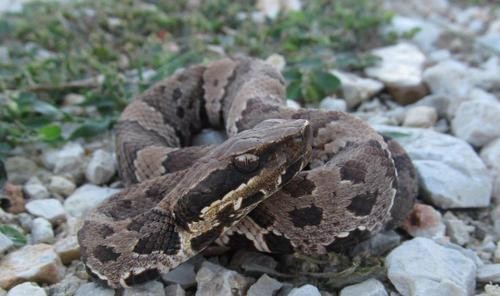Western cottonmouth
A species of Moccasins, Also known as Cottonmouth, Blunt-tail moccasin, Stump-tail water moccasin, Western cottonmouth moccasin Scientific name : Agkistrodon piscivorus leucostoma Genus : Moccasins
Western cottonmouth, A species of Moccasins
Also known as:
Cottonmouth, Blunt-tail moccasin, Stump-tail water moccasin, Western cottonmouth moccasin
Scientific name: Agkistrodon piscivorus leucostoma
Genus: Moccasins
Content
Description General Info
Description
Western cottonmouth is a venomous, semi-aquatic snake well-capable of thriving in both aquatic and terrestrial habitats. Its remarkable ability to glide on water surfaces results from a unique locomotion pattern that aids in hunting aquatic prey. Proven to be a significant predator, it has a potent venom, facilitating swift incapacitation and digestion of prey, affecting small mammals to sizable fishes. Its ecological vitality is evident in promoting the balance of aquatic ecosystems by controlling prey numbers.
General Info
Lifespan
10-24 years
Diet
As a carnivorous species, western cottonmouth primarily feeds on fish and amphibians. The species displays a feeding predisposition towards slow-moving or injured fish and commonly consumed amphibians include frogs and newts. The species uses its heat-sensing abilities to locate its prey.
Appearance
Western cottonmouth is a moderately large, thick-bodied snake, reaching lengths of up to 1.5 meters. Its most distinct characteristic is its heavy venomous fangs. It has smooth, glossy scales that transition from brown, olive green to gray on top and a lighter color belly with dark crossbands. The tail is typically solid black. It has a triangular-shaped head, topped with vertical pupil eyes, giving it a menacing appearance. There are no prominent differences due to age, gender, or subspecies.
Behavior
A predominantly solitary creature, western cottonmouth is a semi-aquatic, nocturnal species that heavily relies on ambush predation. Exhibit defensive 'warning' behavior by rattling their tail and establishing large territories in wetland habitats. Demonstrates live birth, with the young displaying notable independence immediately post-parturition. In colder climates, western cottonmouth employs hibernation-like brumation, seeking refuge in snake 'dens' or crayfish burrows.
Scientific Classification
Phylum
Chordates Class
Reptiles Order
Lizards and snakes Family
Vipers Genus
Moccasins Species
Western cottonmouth 